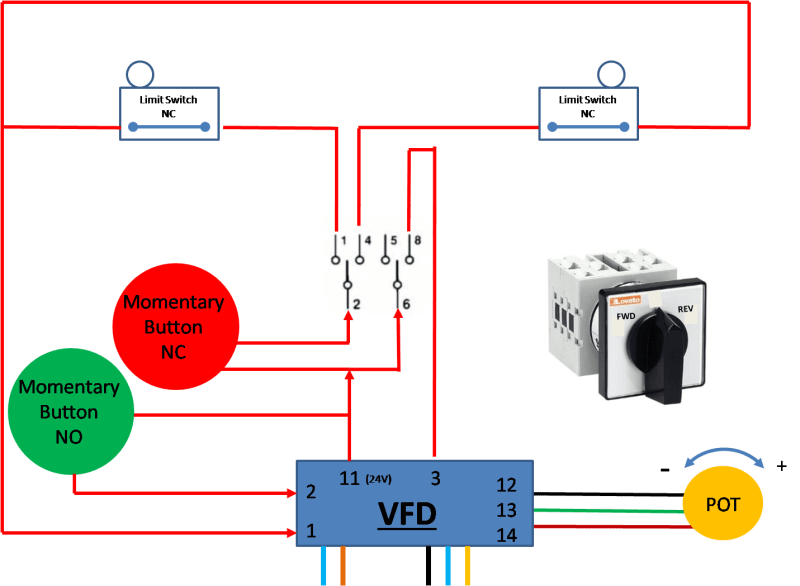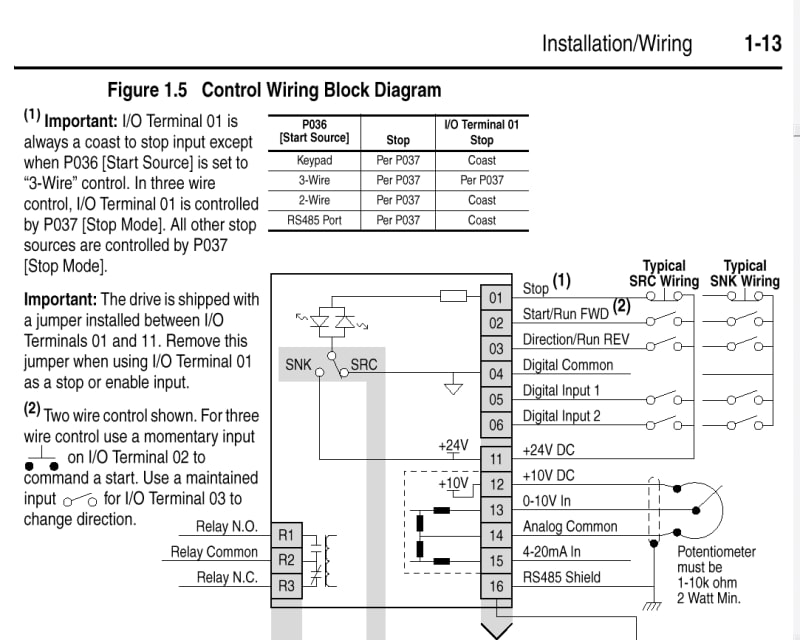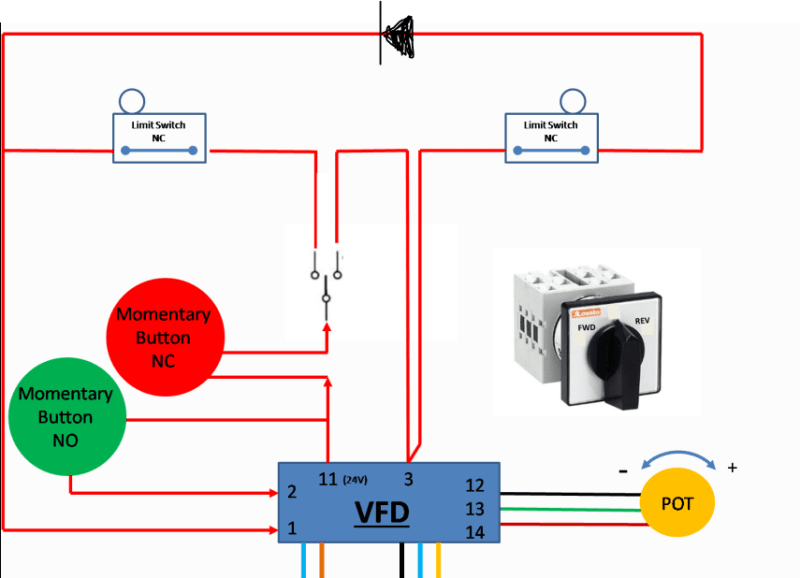I am considering using a VFD to operate a motor, which is linked by chains and sprockets to an elevating platform.
The platform would need an upper and lower limit switch to prevent it crashing.
I wish for the operator control panel to have just 3 buttons, UP, DOWN and STOP.
I presumed this was a very common application, and thought the wiring would be pretty straight forward, but when I came to draw out a scheme, I got a bit confused.
Then when I looked on line I couldn't find any examples of such a circuit.
Am I wrong to think this is a common set up? I was searching for VFD MOTOR DRIVE WITH LIMIT SWITCHES
The VFD will not be visible to the operator, and will only be accessible and adjustable by myself.
Can anyone point me to such a circuit diagram please.
The platform would need an upper and lower limit switch to prevent it crashing.
I wish for the operator control panel to have just 3 buttons, UP, DOWN and STOP.
I presumed this was a very common application, and thought the wiring would be pretty straight forward, but when I came to draw out a scheme, I got a bit confused.
Then when I looked on line I couldn't find any examples of such a circuit.
Am I wrong to think this is a common set up? I was searching for VFD MOTOR DRIVE WITH LIMIT SWITCHES
The VFD will not be visible to the operator, and will only be accessible and adjustable by myself.
Can anyone point me to such a circuit diagram please.






